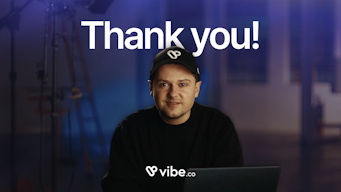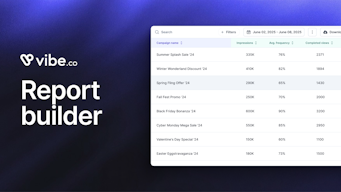ROAS Calculation Across Digital Channels
In the swamp of newfangled ad tech acronyms, ROAS is an OG term our marketing forefathers were already scratching their heads over. An offshoot of ROI calculations (Return on Investment), ROAS stands for Return on Ad Spend and helps marketers measure the effectiveness of their ads relative to their cost.
Keeping track of ad spend value is especially important in today’s fast-paced digital environment. As marketing teams decentralize, digital channels multiply, and customer journeys become increasingly complex, the value of specific strategies over time will help marketers optimize campaigns for long-term success.
Here’s how to accurately calculate and optimize your ROAS across channels this year.
How to calculate ROAS
For every dollar you spend on a campaign, calculating your ROAS will allow you to understand the relative effect it had on your overall campaign results. It’s not just about the return, it’s the value of that return in relation to your spend on a particular campaign or channel. Think of it as a ratio between revenue generation and ad cost, which will give you more actionable insight than just basic campaign results.
The basic formula is:
[Profit from Advertising] divided by [Cost of Advertising] = a round number typically under 10
So, if you spend $1,000 on your video ad campaign and that generates $2,000 in sales, your ROAS is 2. At minimum, advertisers aim for a ROAS greater than 1, which means they are getting at least the value of their ad spend back. Having a ROAS less than 1 indicates that it either wasn't successful or this may not be the right KPI for your campaign.
Leverage ROAS Measurement on Legacy Digital Media
Although the overall formula for ROAS calculation is the same across channels, some newer tools have different benchmarks to look for as opposed to legacy digital channels like Google Ads or social media platforms. For the latter, last touch attribution remains the standard, but doesn’t tell the full story of a complex omnichannel campaign. Let’s look at the best ways - beyond last touch - to read and understand ROAS results on Google Ad, social media, and Digital Out Of Home campaigns before exploring newer channels like CTV.
Google Ads: Google Ads leverages AI and smart bidding technology to customize ROAS calculations by vertical and campaign goal. They call it tROAS, for Targeted Return On Ad Spend and it’s meant to predict the value of potential conversions. But be careful: while this type of measurement can be a huge benefit to certain types of businesses, it’s not for everyone. The “return,” in this ROAS is strictly limited to purchases so be careful if the conversions you’re looking for do not generate an immediate return on investment (brand lift, free tool usage, content download, referral, etc.)
While Google Ads will push to use their automated processes, there are other options:

Whichever strategy you choose, the basic formula remains the same: profit/ad spend. Make sure the ratio of ad spend to campaign return fits within your projected range.
Social Media: Meta advertisers were probably some of the most affected stakeholders when Apple launched their ATT (Ad Tracking Transparency) framework in 2021 and their CPMs have never fully recovered - not to mention the dystopian quagmire that is X (formerly known as Twitter). Despite these setbacks, social media remains a crucial component to any omnichannel digital campaign, but marketers need to pay closer attention to their social campaign results and, more importantly, what those results cost them. That’s where ROAS comes in.
Measuring the ROAS of your social ads is directly linked to pixel and conversion tracking. When installed correctly you get direct data on post impression customer actions. But remember: much like Google Ads differentiates between organizations aiming for immediate online monetization and longer term lead generation, so too do your favorite social media platforms (Facebook, LinkedIn, X, etc.)
If your business fits in the first category (immediate monetization), measuring your ROAS will be easier because it will be tracked directly by your pixel and purchase conversion event. If your campaign goals are longer term, however, most walled garden platforms prioritize last touch attribution and won’t be much help analyzing longer customer journeys; but you can still use their data, just track the leads that convert and manually cross-match them with your social media data.
DOOH: Long considered a “spray and pray” tactic that only yielded results when deployed on massive scale (hello cityscapes blanketed with personal injury billboards), digital out-of-home advertising now exists in an increasing variety of formats, with cross-platform measurement capabilities to match. GPS data, geofencing, campaign-specific QR codes, and more are helping advertisers track DOOH exposure directly back to online behavior, tracked simply with cookies and pixels. These tools allow brands to measure the effect a DOOH ad has on foot traffic, in-store sales and visitation lift, app downloads, and more, facilitating meaningful ROAS measurement.
Here’s how to gather ROAS-relevant data from your DOOH campaign:
- Create CTA and DOOH campaign-specific landing pages Create a Call-to-Action to facilitate attribution tracking
- Leverage Anonymous GPS Data to track ad views and foot traffic
- Add campaign-specific QR Codes and/or social media tagging on Your Creative
- Geo-fence your DOOH units and retarget viewers to enhance traceability and attribution.
Leverage ROAS Measurement on CTV
Connected Television has come a long way since the pandemic pushed millions of TV viewers to cut the cord and switch to streaming their favorite shows. Today, 94% of TV watchers in the US own at least one connected device, and those numbers are only growing. Meanwhile, advertisers are scrambling to meet the demand. According to eMarketer, “CTV is a must-buy for three out of four media buyers, more so than any other video type,” while streaming ad spend broke the $1B mark in June 2023.
Why? Lots of reasons, but one of the most exciting is streaming advertising’s granular household IP targeting ability, without the use of cookies. Household IP targeting is fully privacy-compliant, while allowing advertisers to maintain ad relevance and impact.
In order to measure your CTV campaign’s ROAS, you first need to determine the nature of the “return” you are expecting. A programmatic CTV platform like Vibe should offer several options:
- Targeted ad impressions
- Web traffic
- Leads
- Purchases
Ad impressions are tracked in real-time, while web traffic, leads, and purchase attribution will necessitate a simple pixel placement on your website.
With a brand new medium like streaming TV advertising, ROAS is especially helpful to optimize campaigns: test video styles, audience segmentation, timeslot targeting, etc. It can be difficult, however, to tie revenue growth directly back to CTV ad impressions for a few reasons:
- CTV/OTT advertising is a top-of-funnel tactic, making it difficult to track once someone has entered the funnel
- Successful CTV/OTT advertising often results in a conversion through another channel — i.e. via a landing page or at a physical location — potentially creating confusion in terms of ROAS.
Still, measuring the effectiveness of your CTV/OTT campaign in terms of profit is crucial.
That’s why we recommend our clients consider measurement models that better reflect today’s complex buyers’ journeys like multi-touch attribution, MMM modeling, incrementality measurement, Google Analytics integration, MMP integrations, and more.
Grow your ROAS with Vibe
As a cookieless future looms and customer journeys fragment, make the most of your ROAS results all the way down the sales funnel! Install event-specific pixels, integrate your CTV dashboard with Google Analytics, test and edit campaigns in real-time, optimize campaign-specific landing pages, and retarget audiences across channels. Want to learn more? Visit our Insights Center or schedule a quick discovery call!



